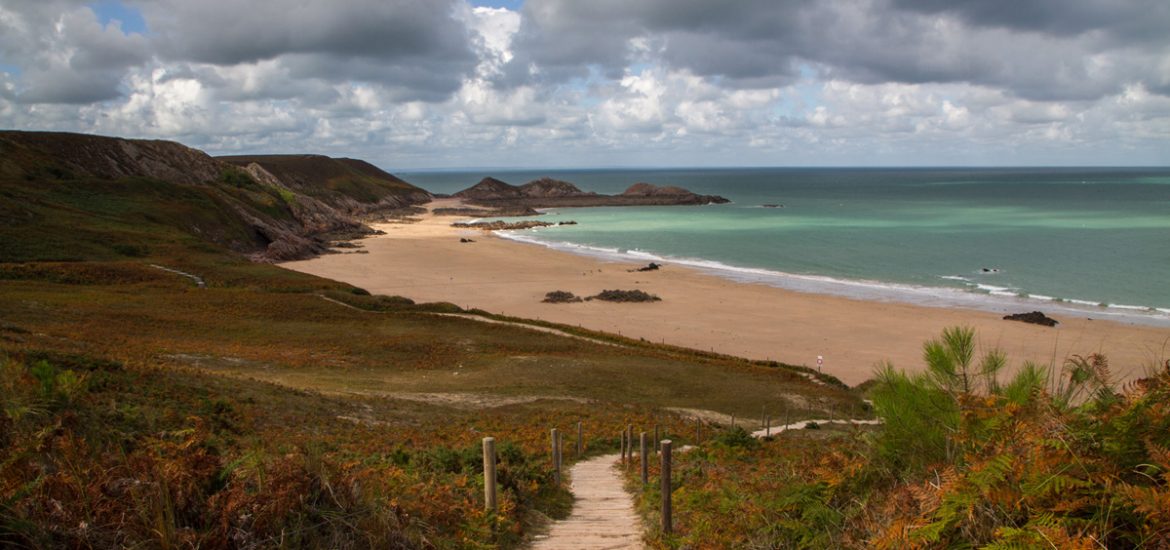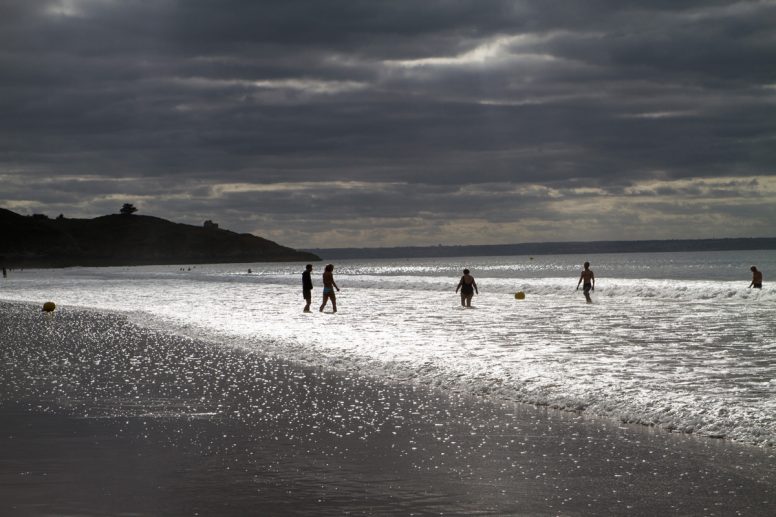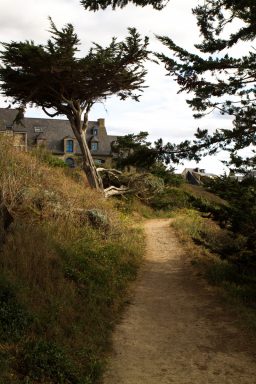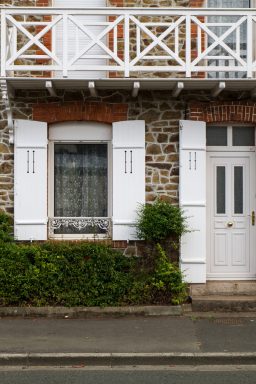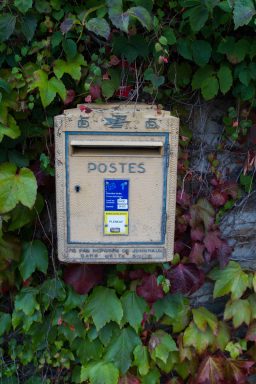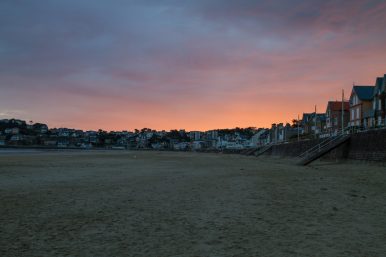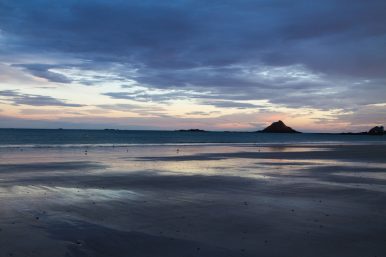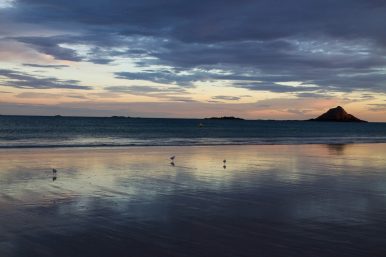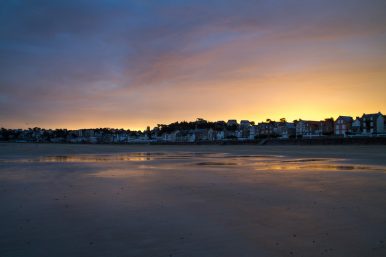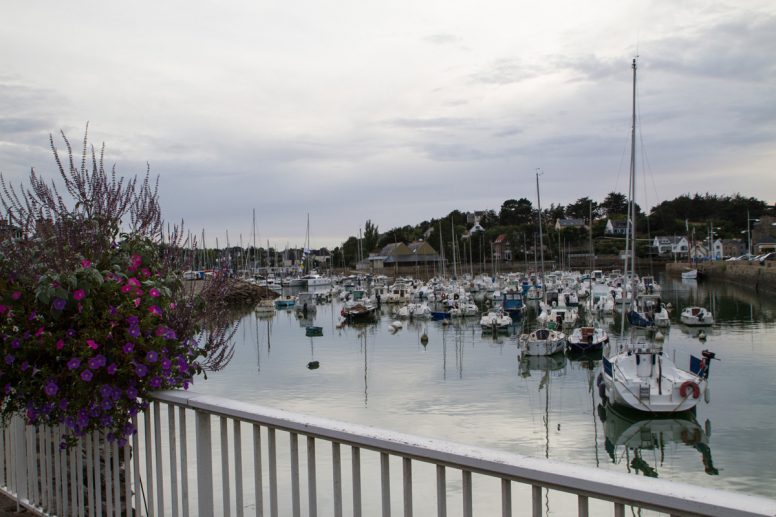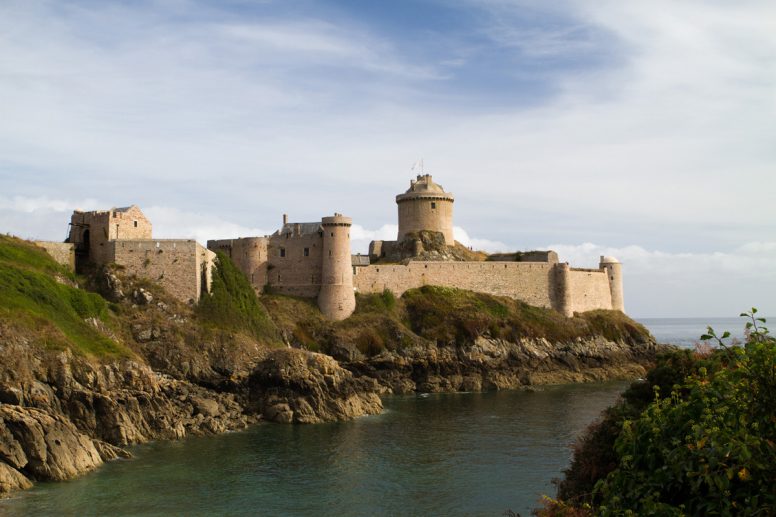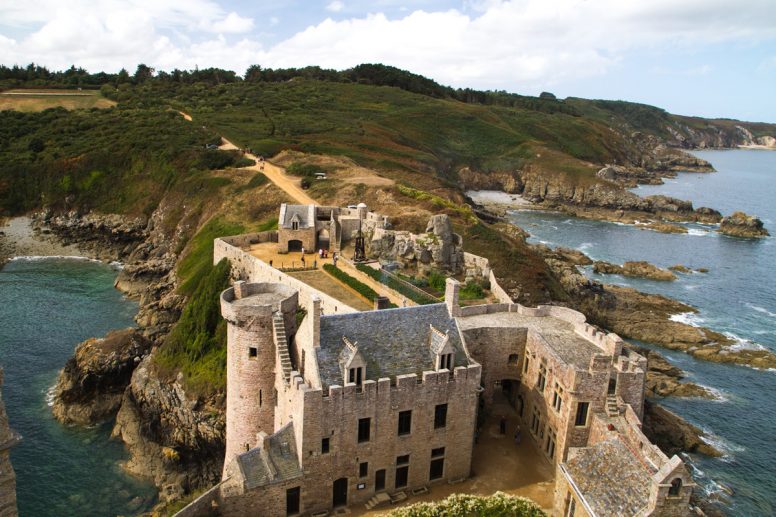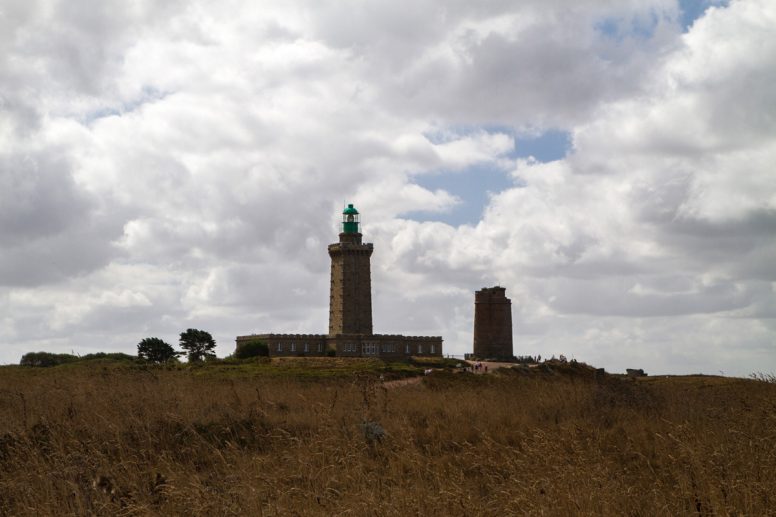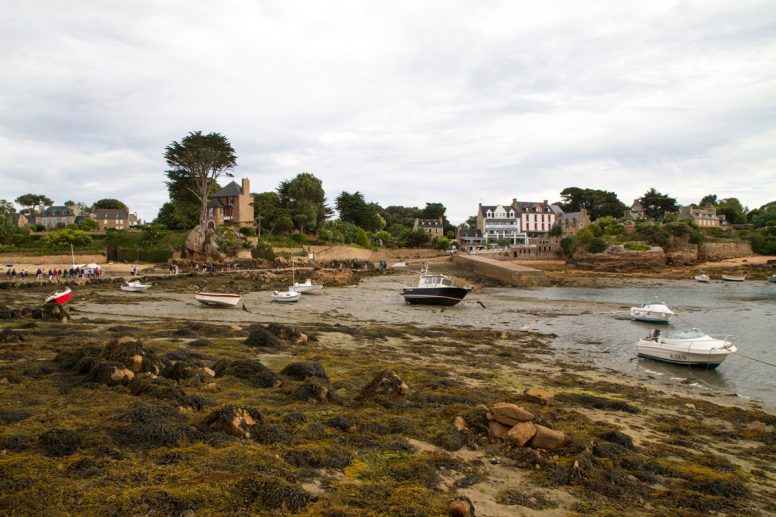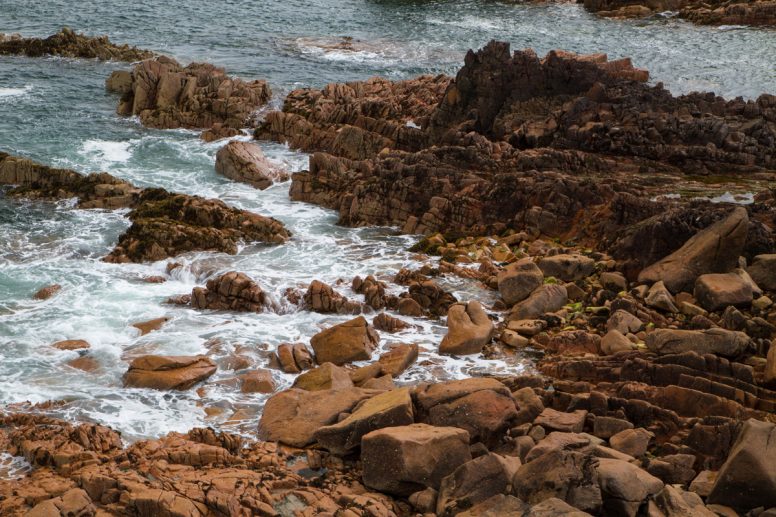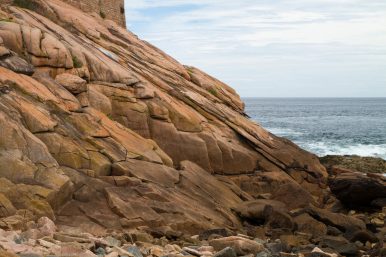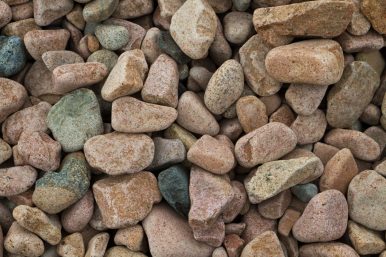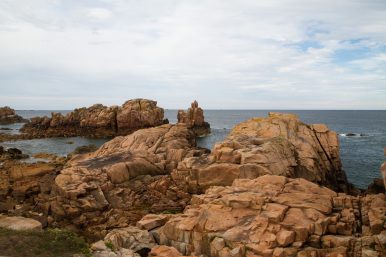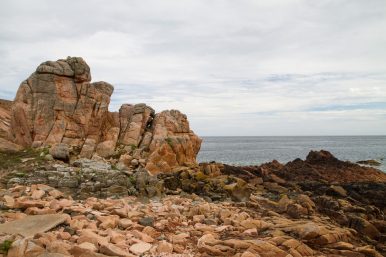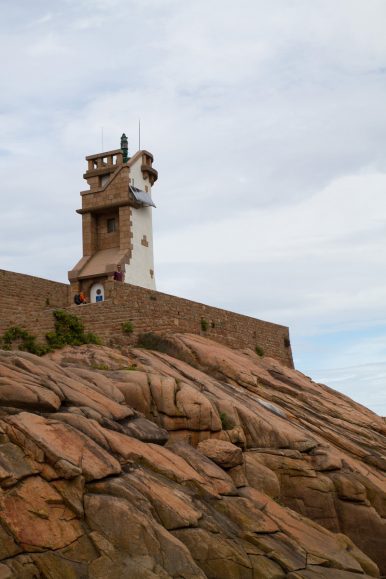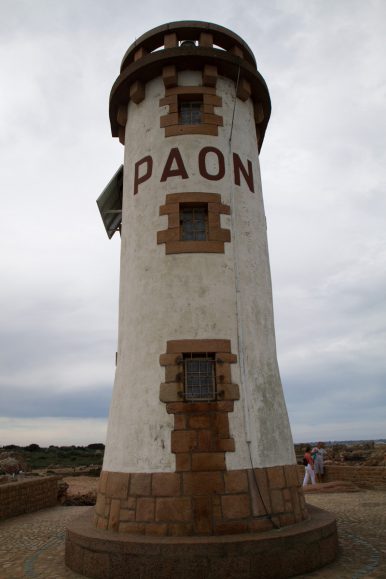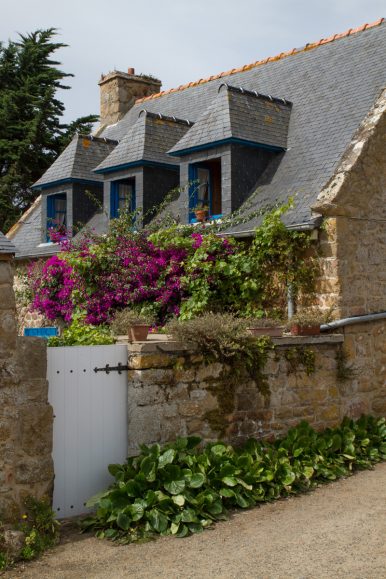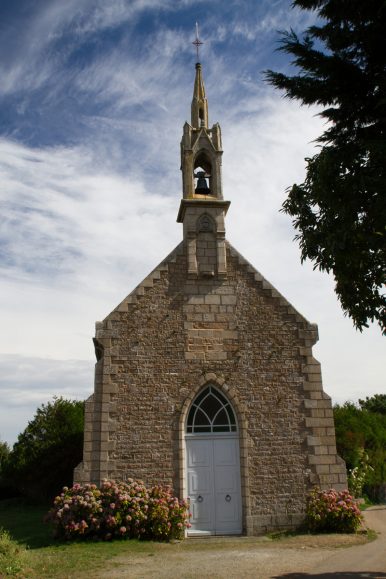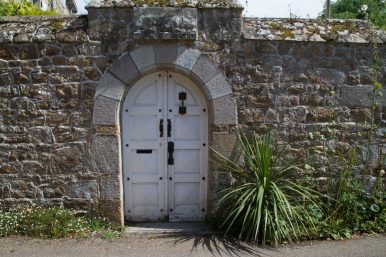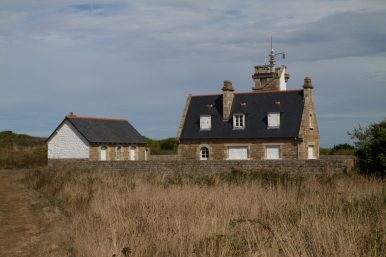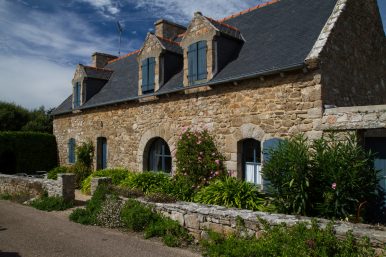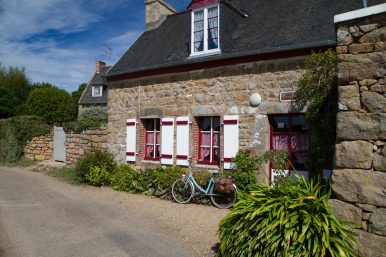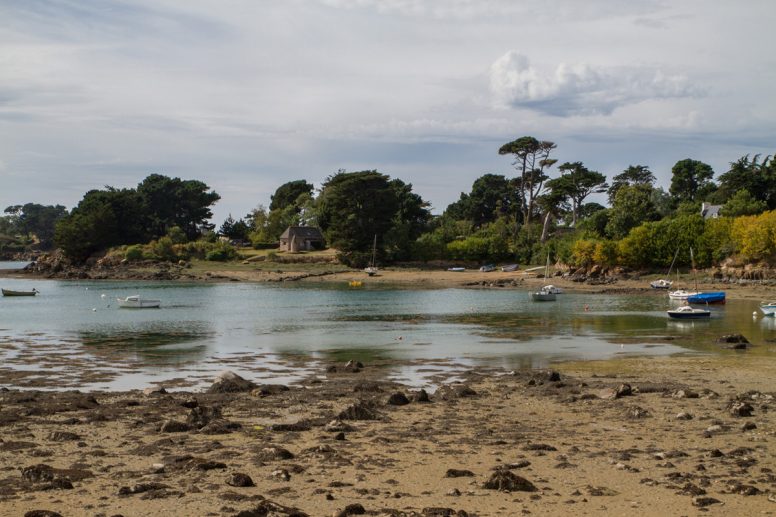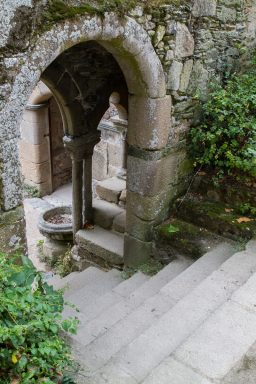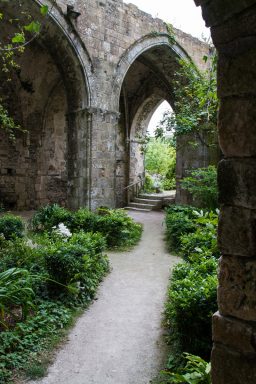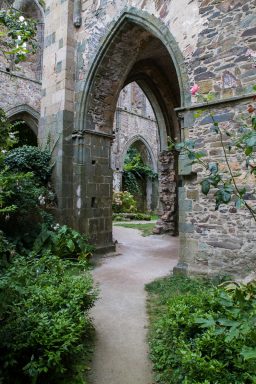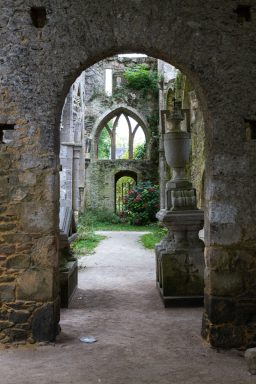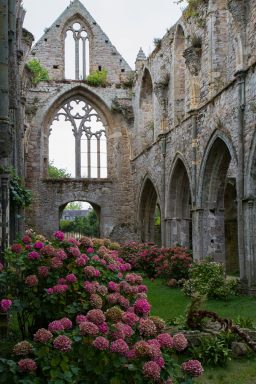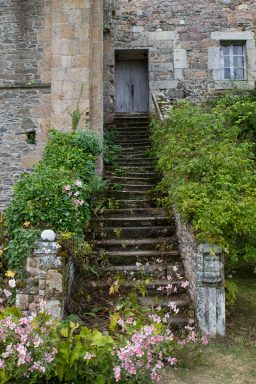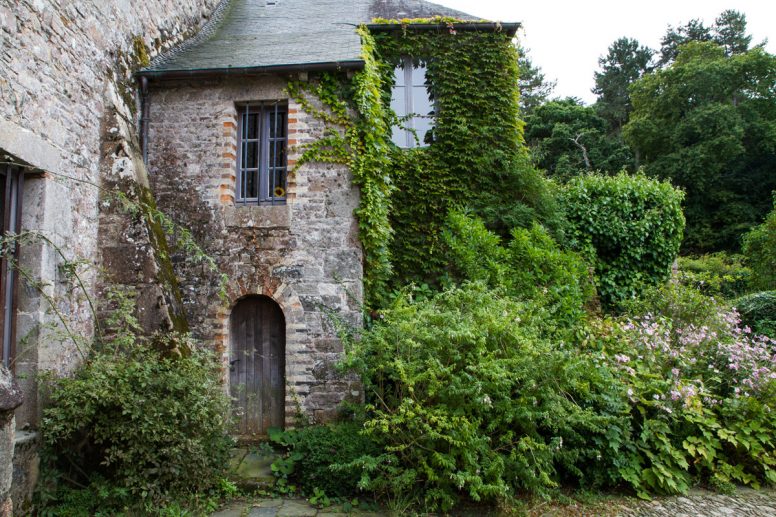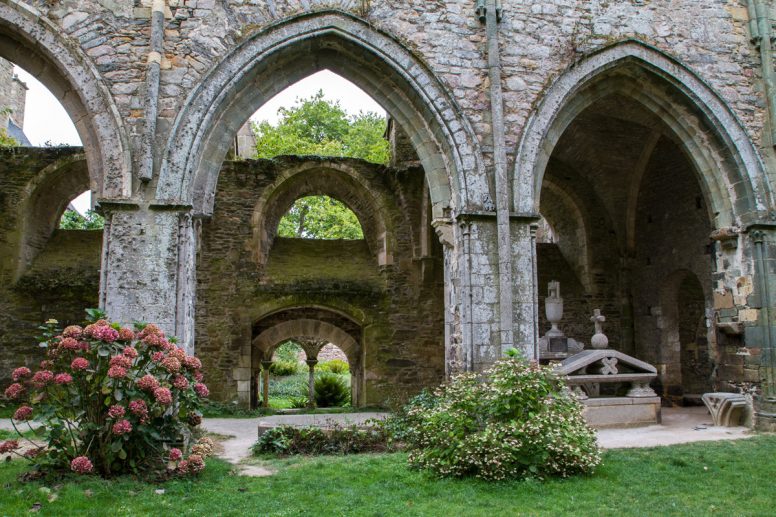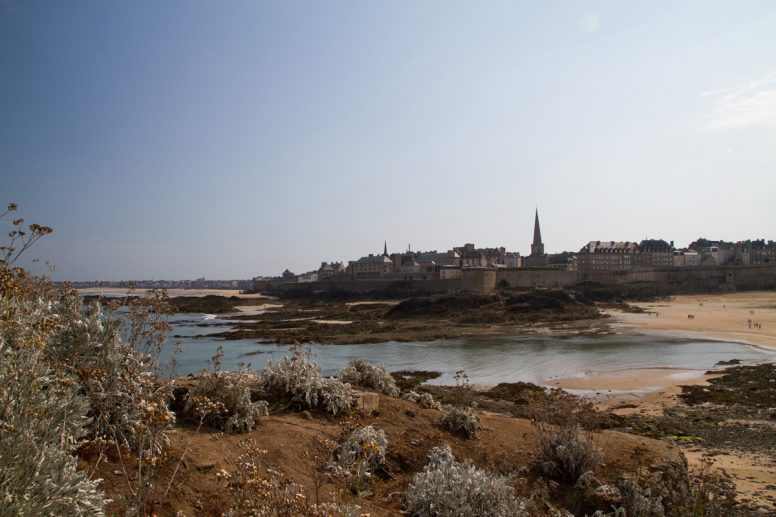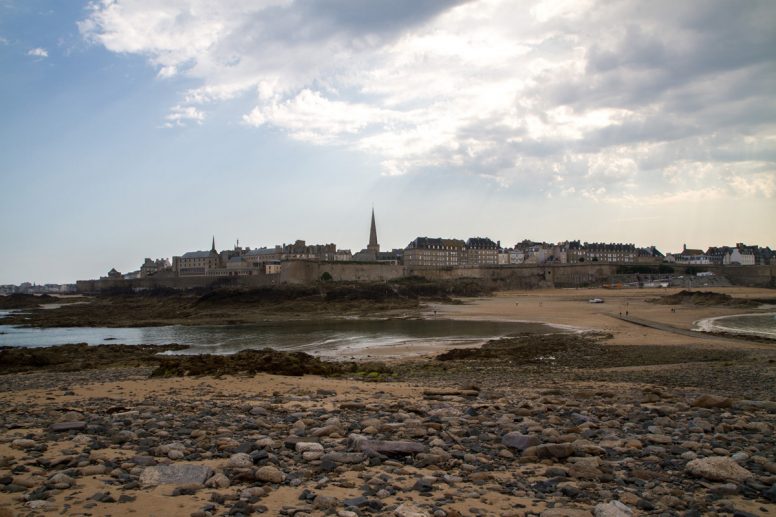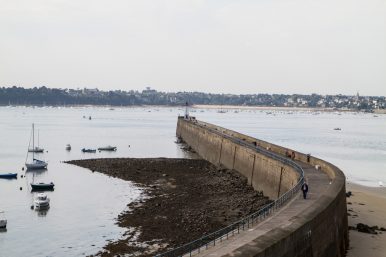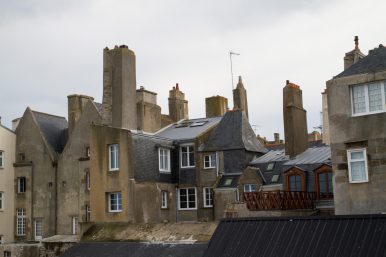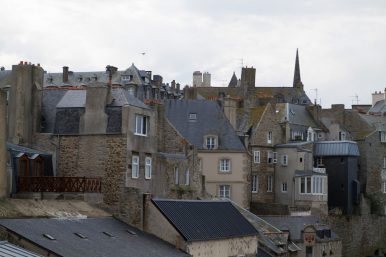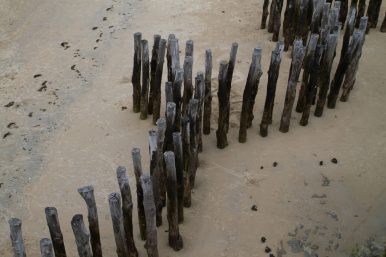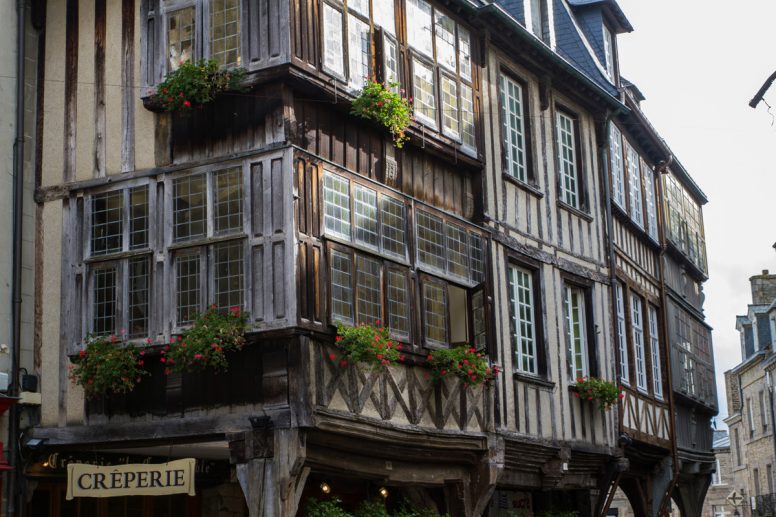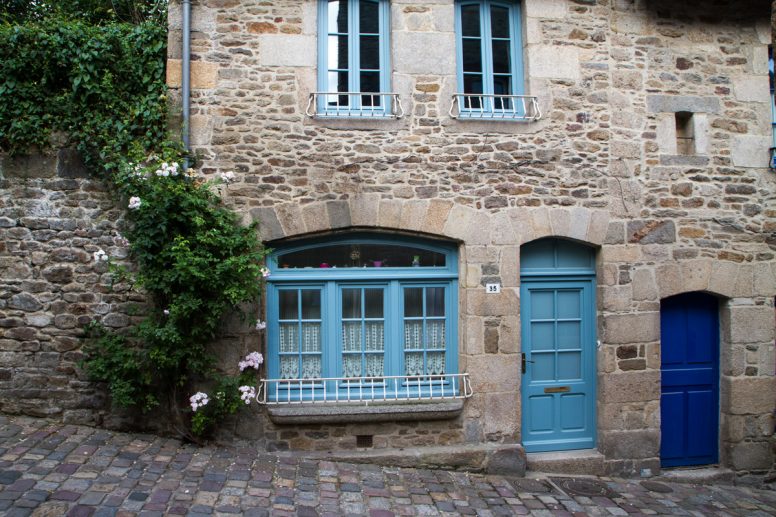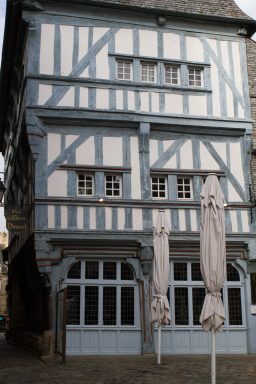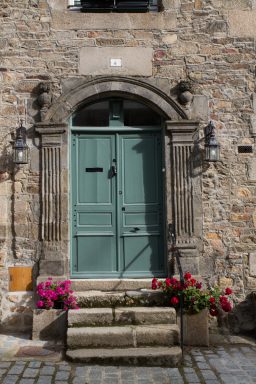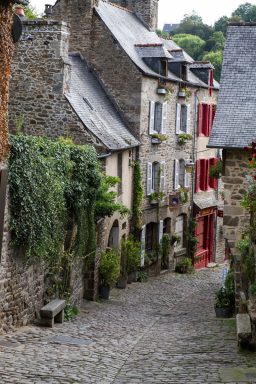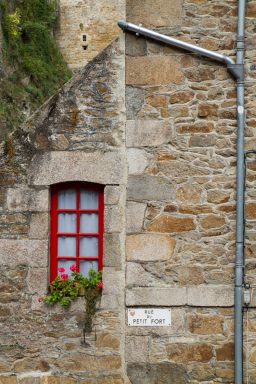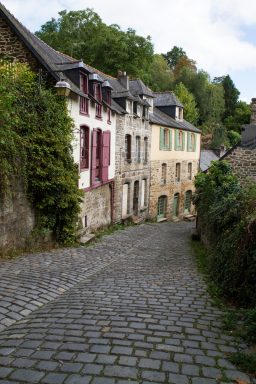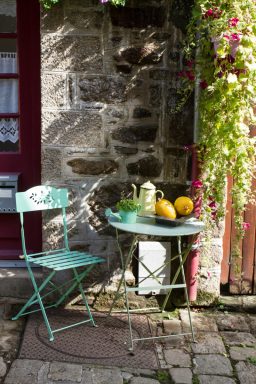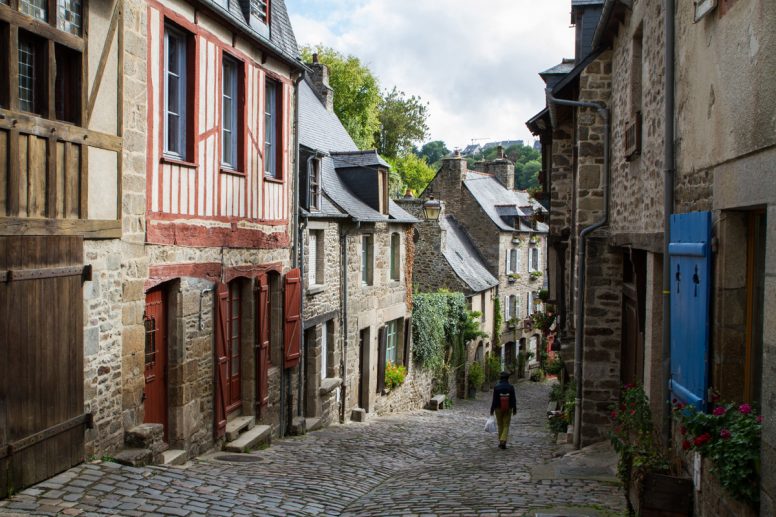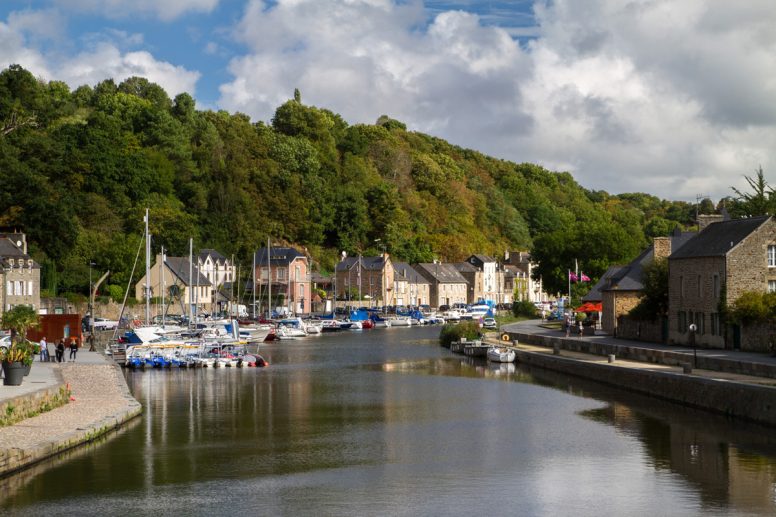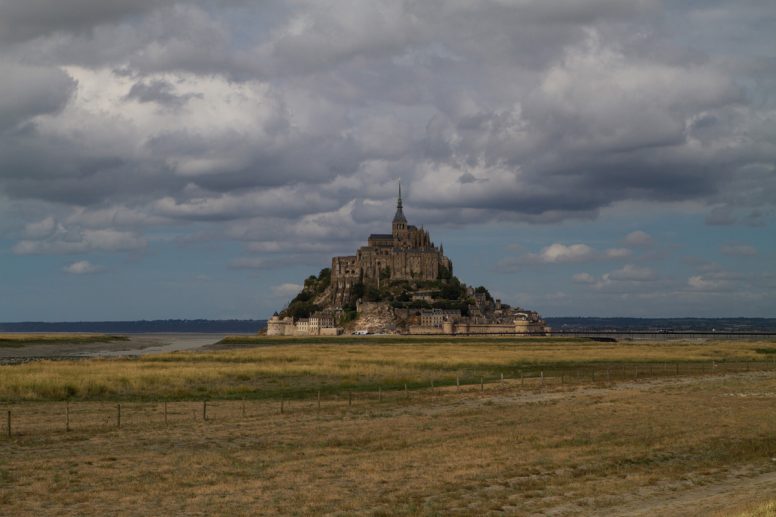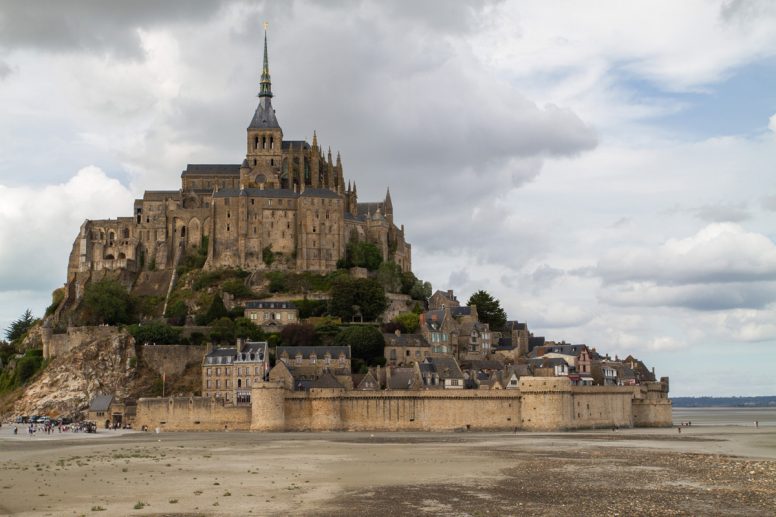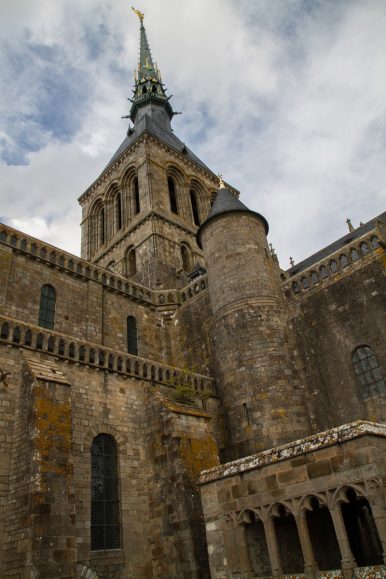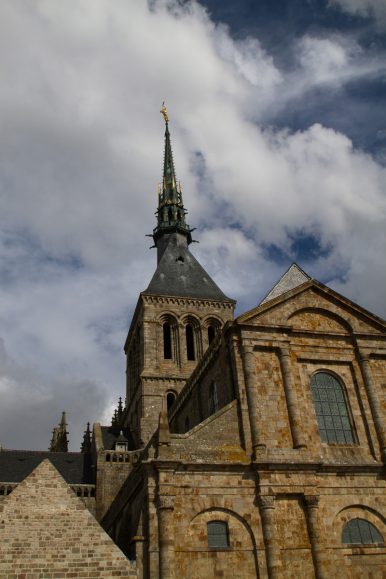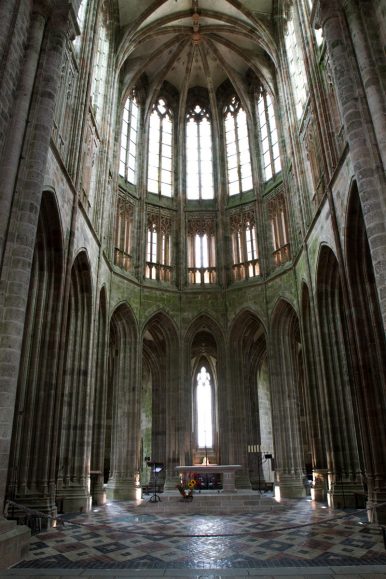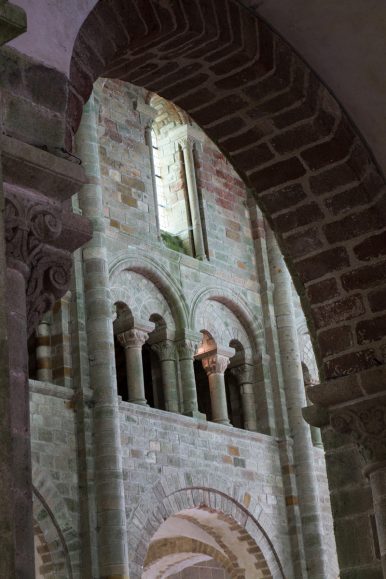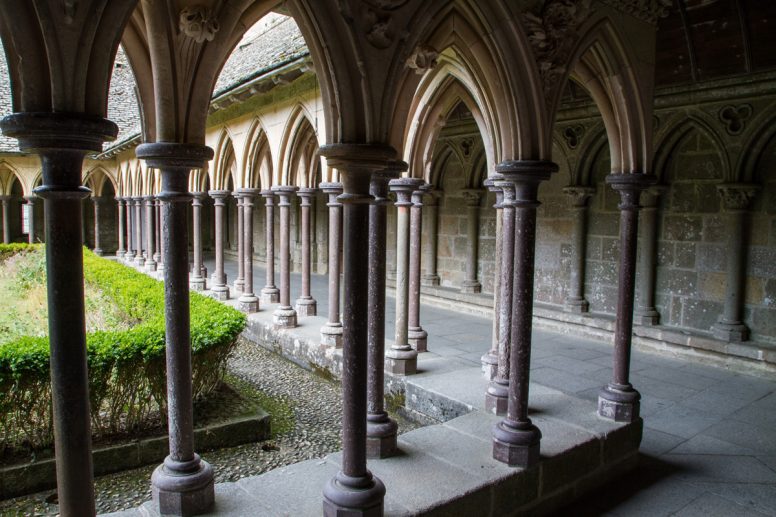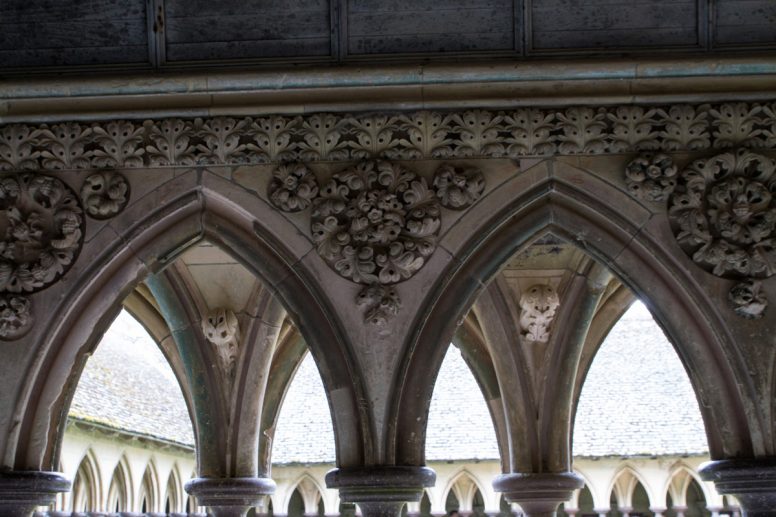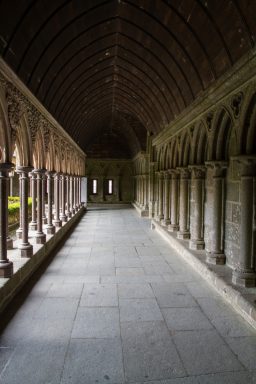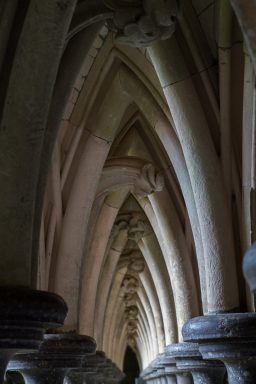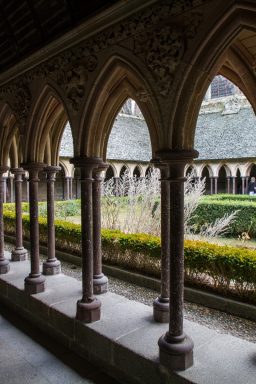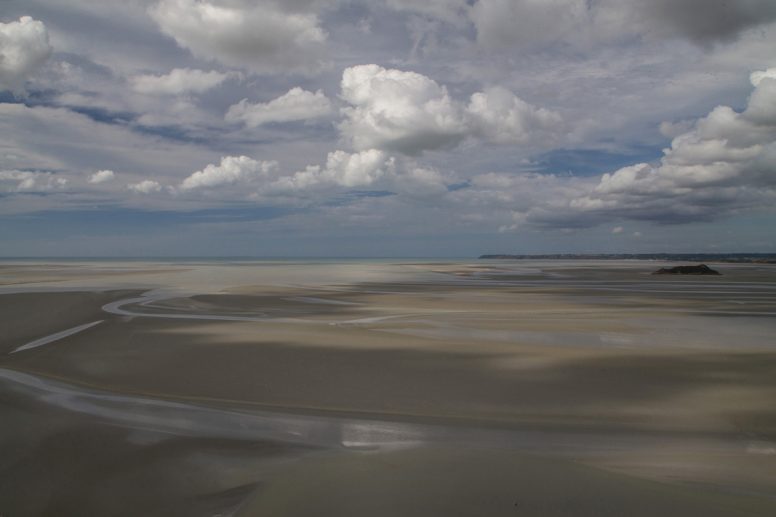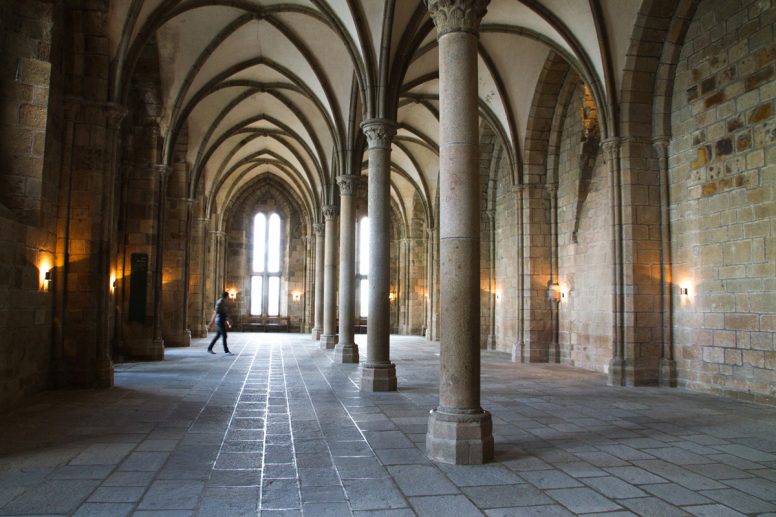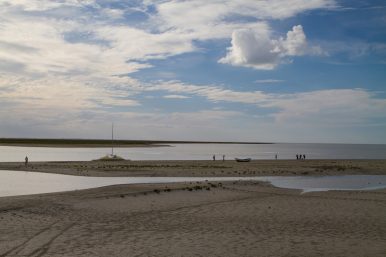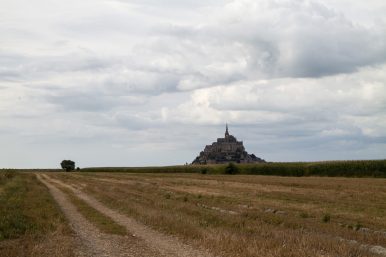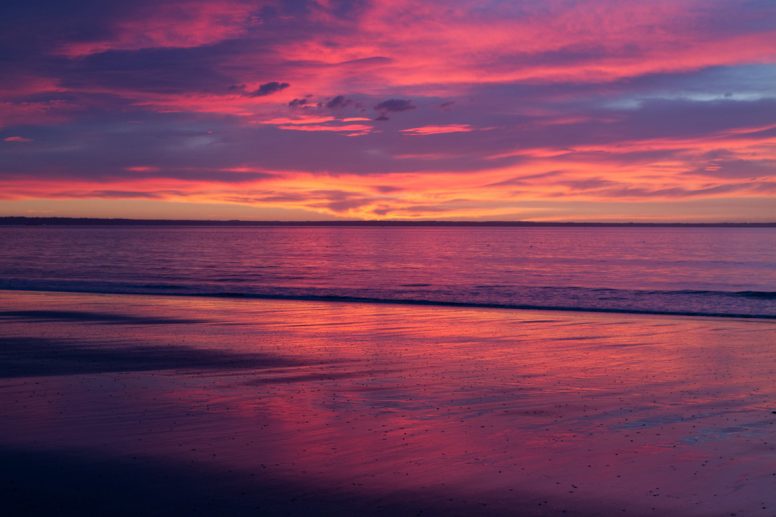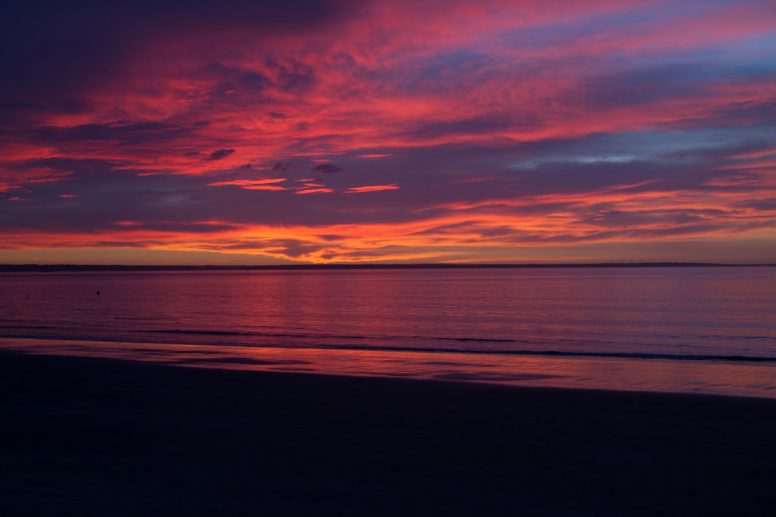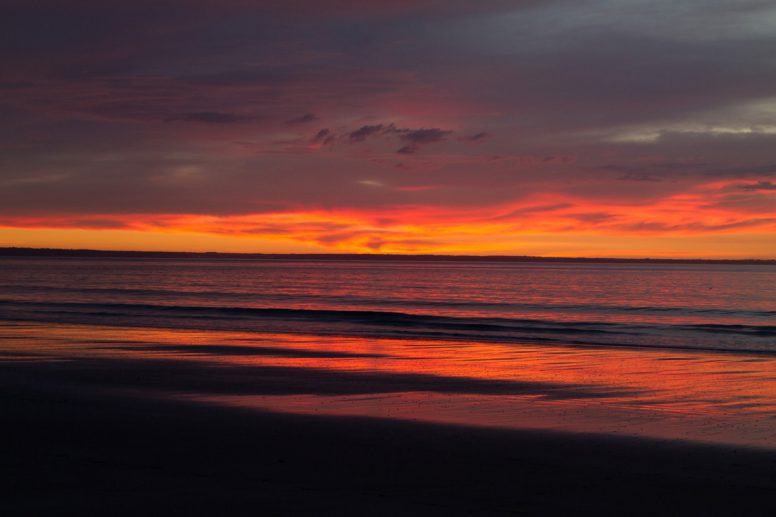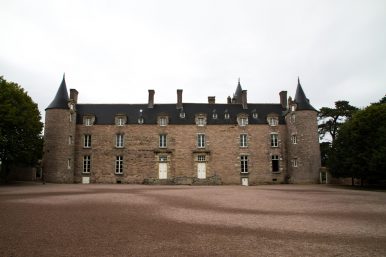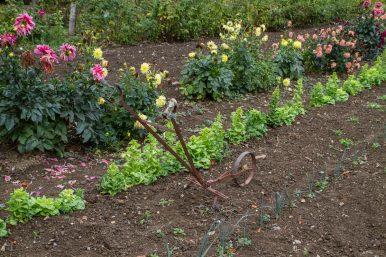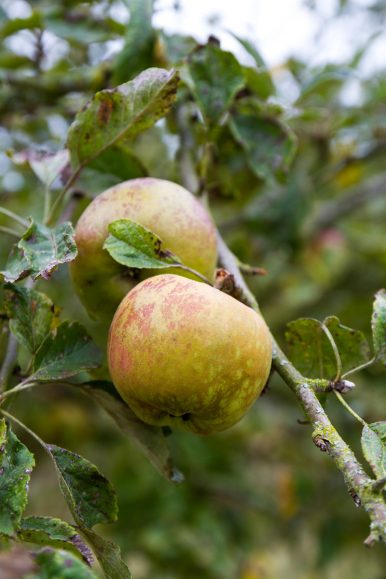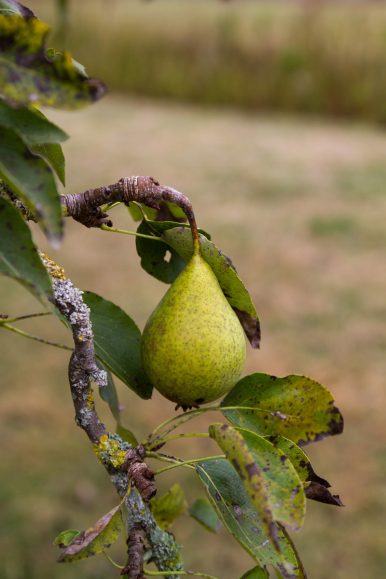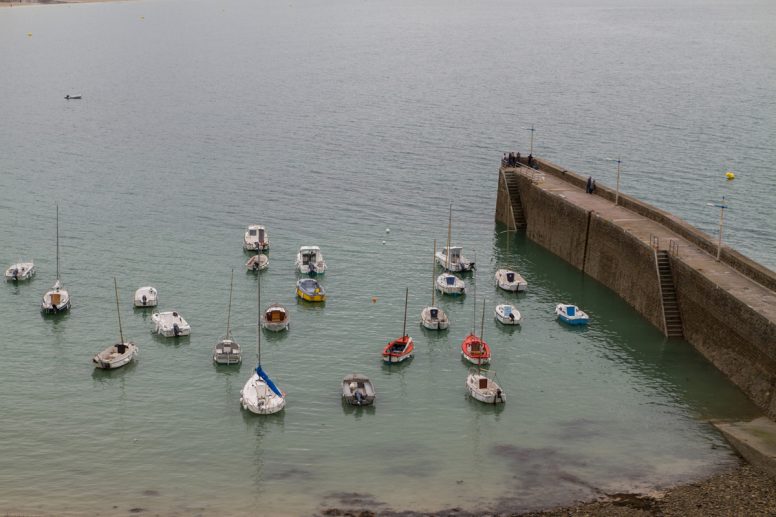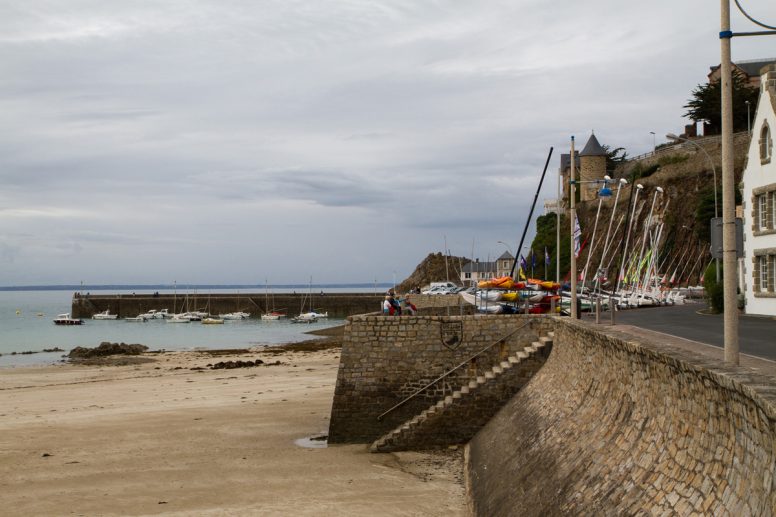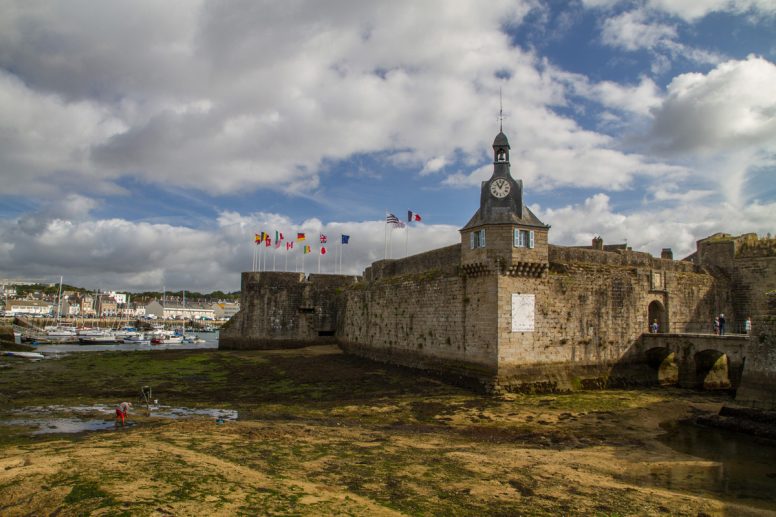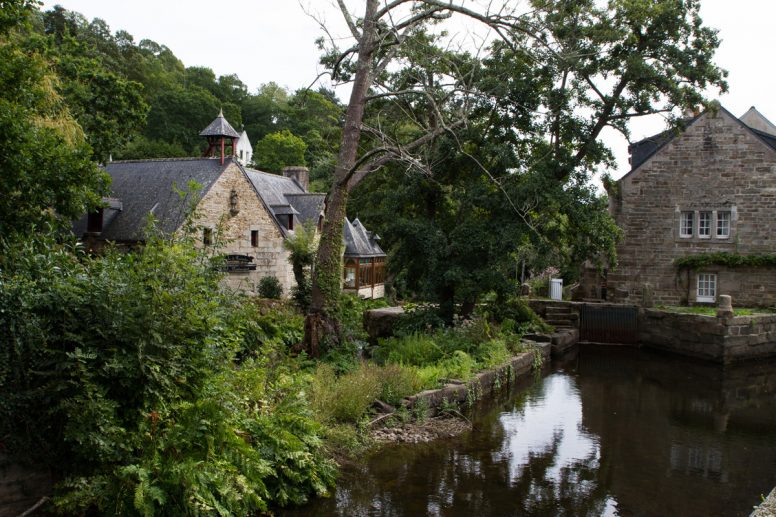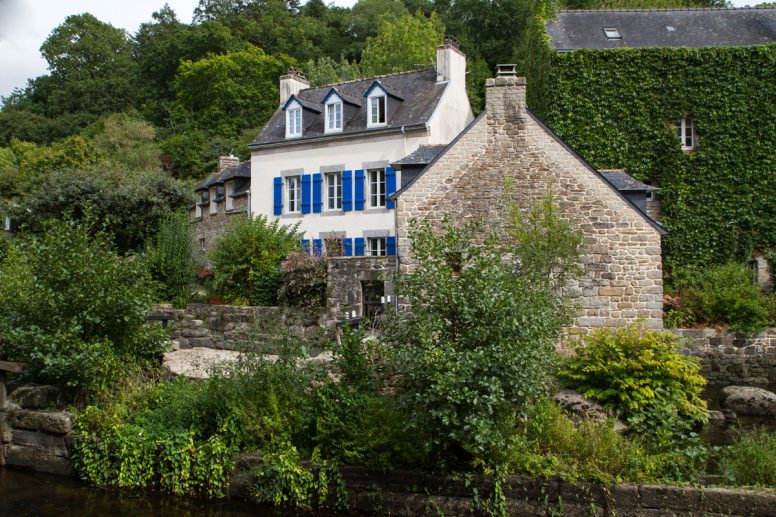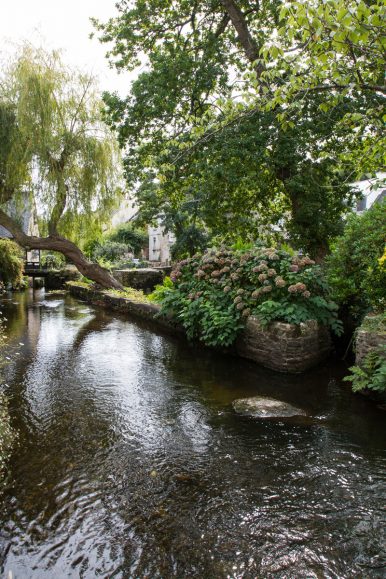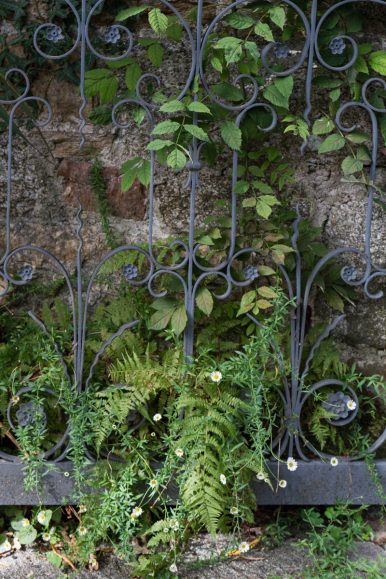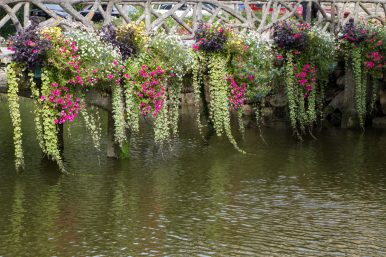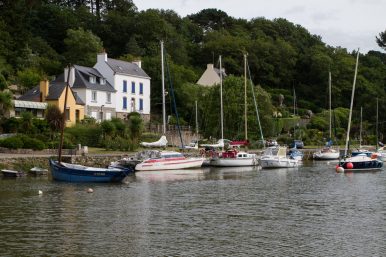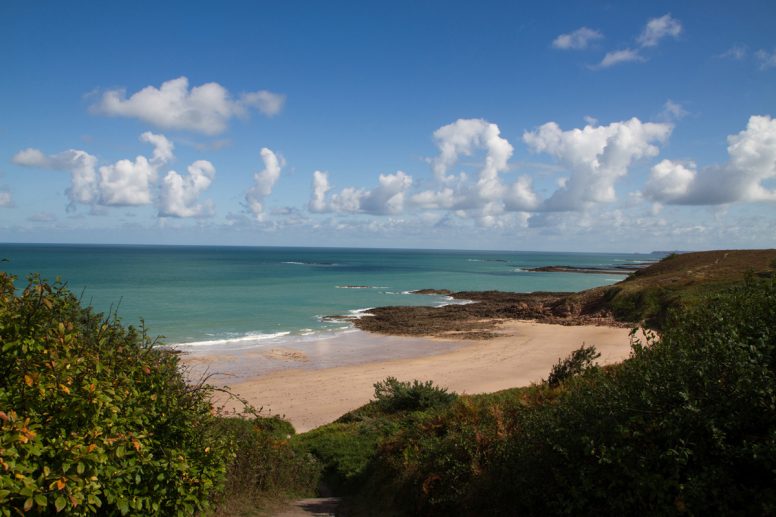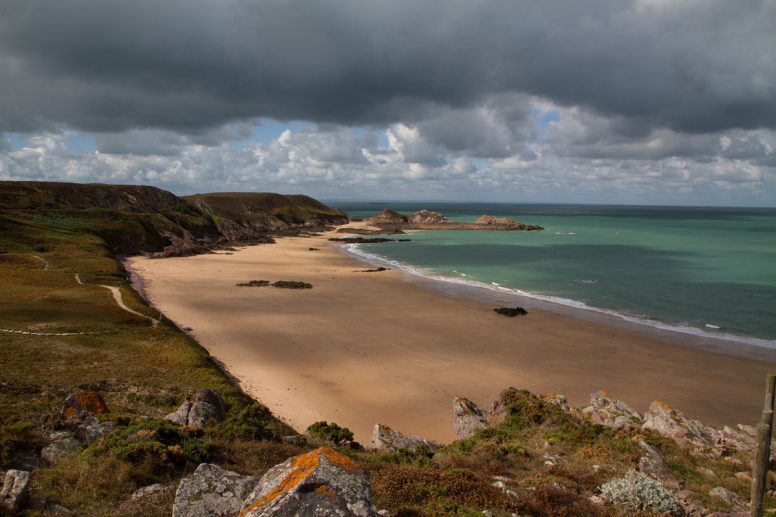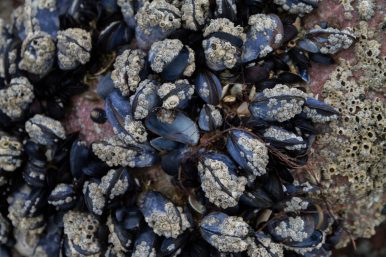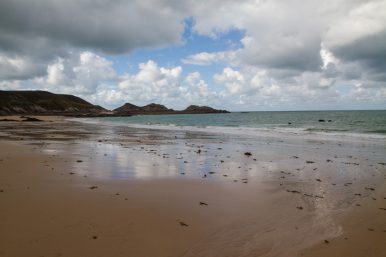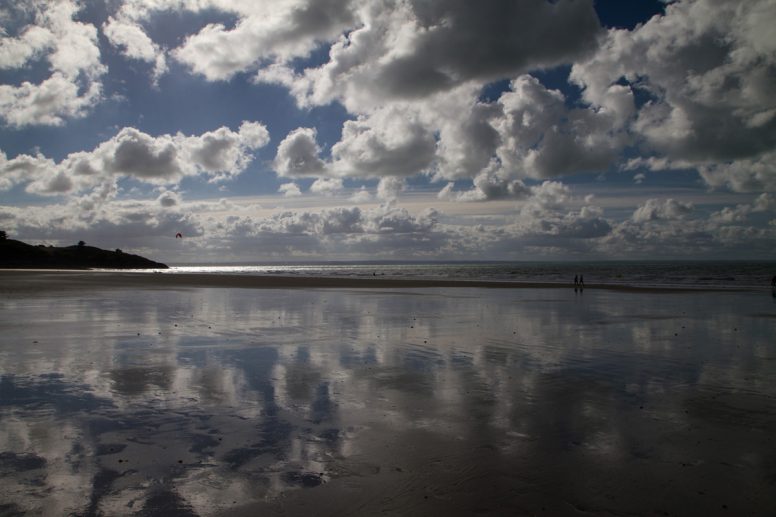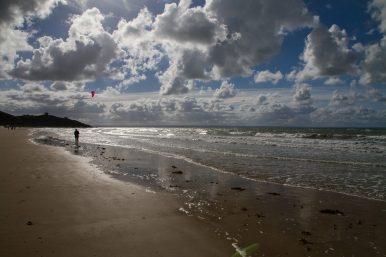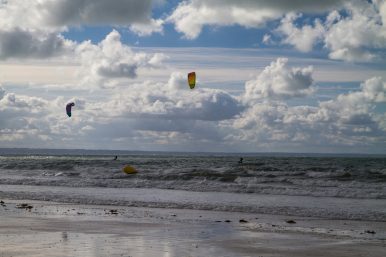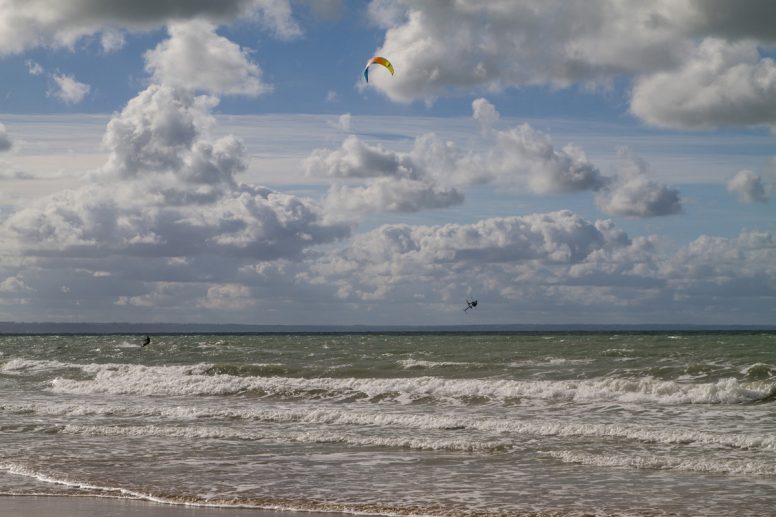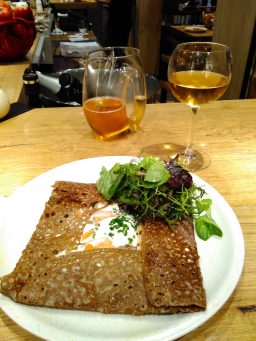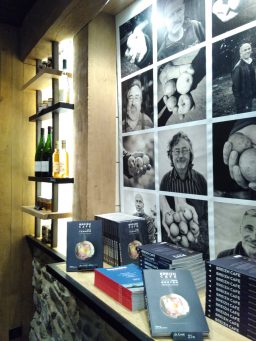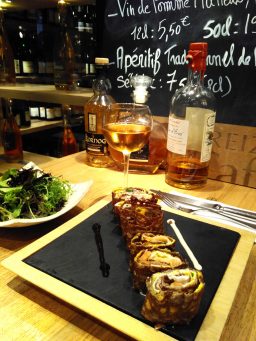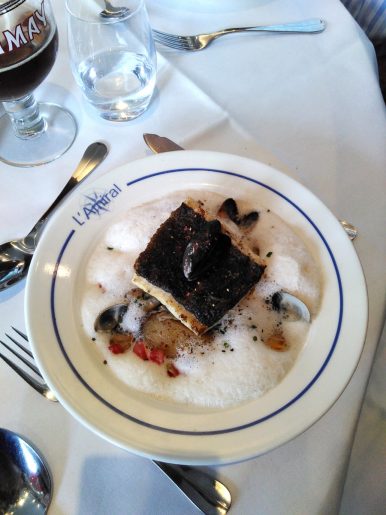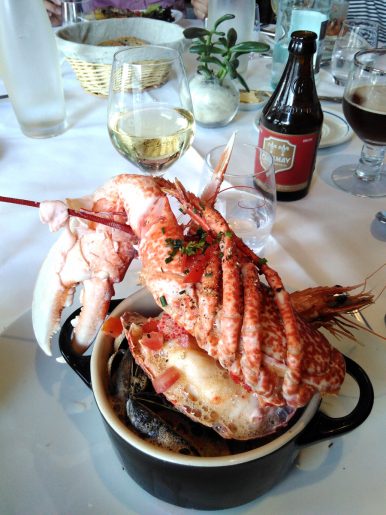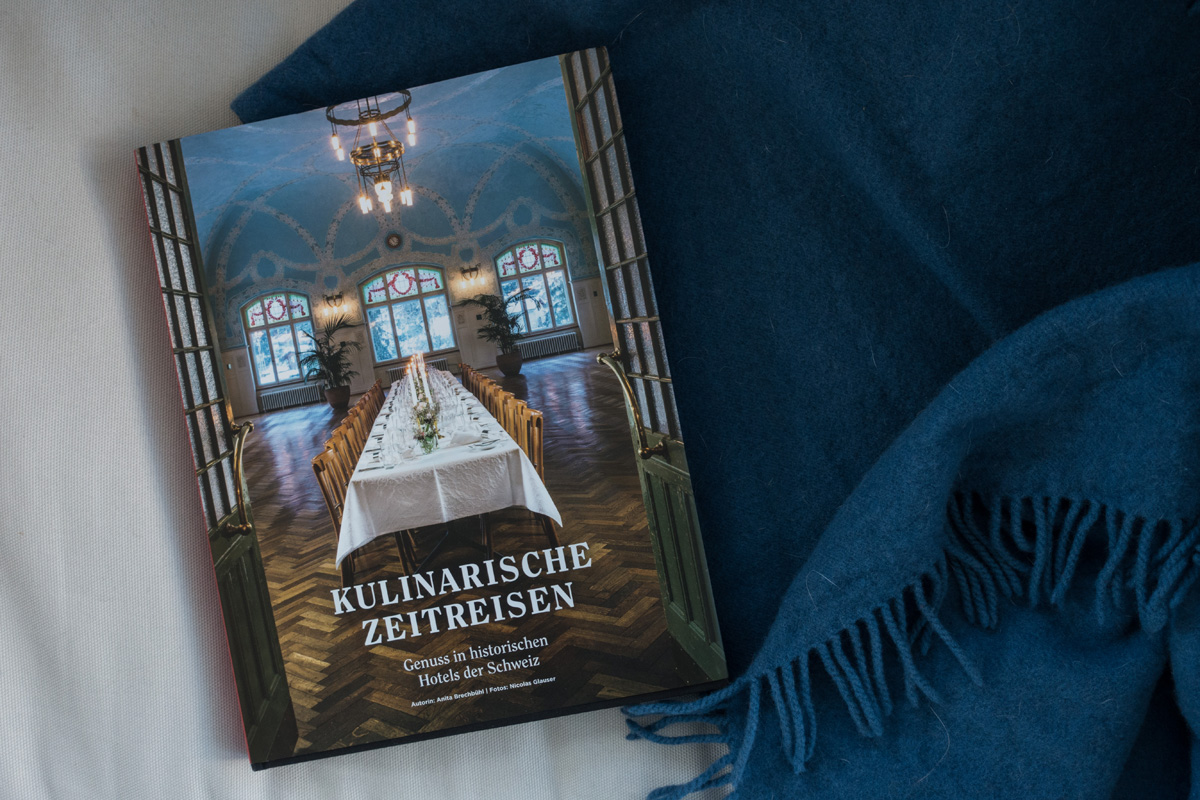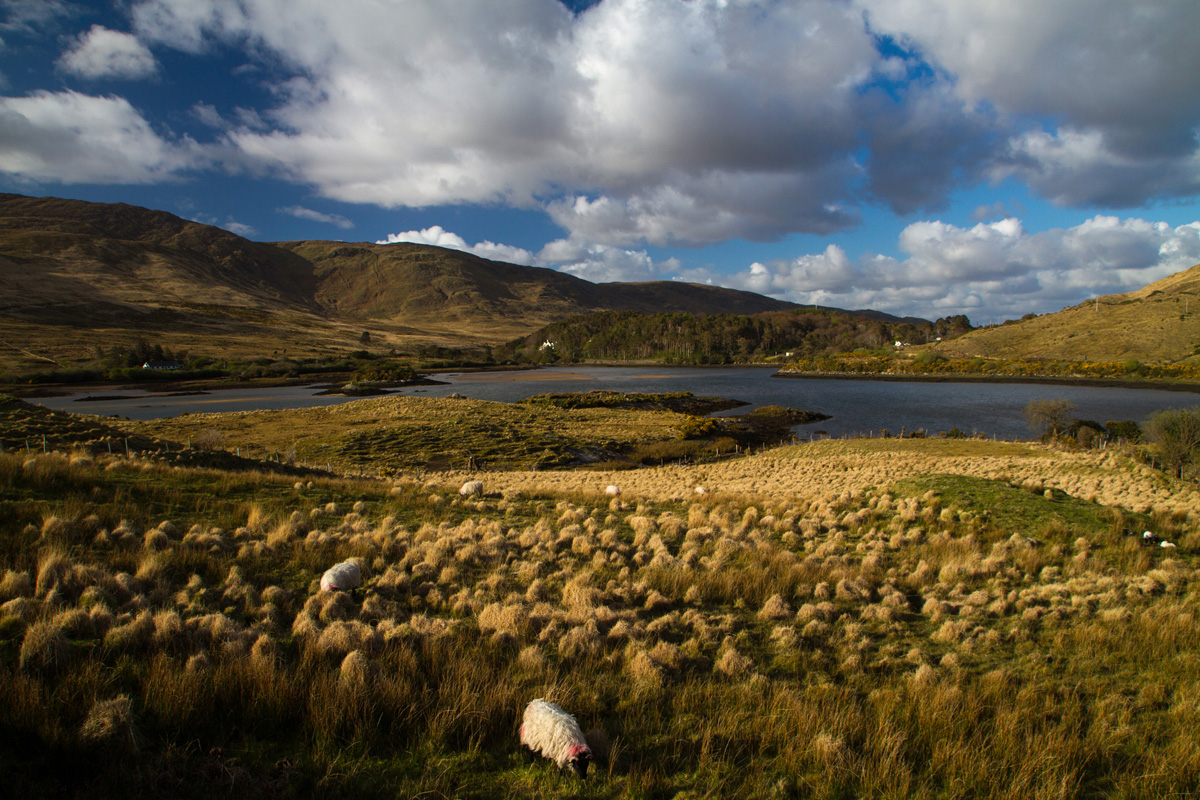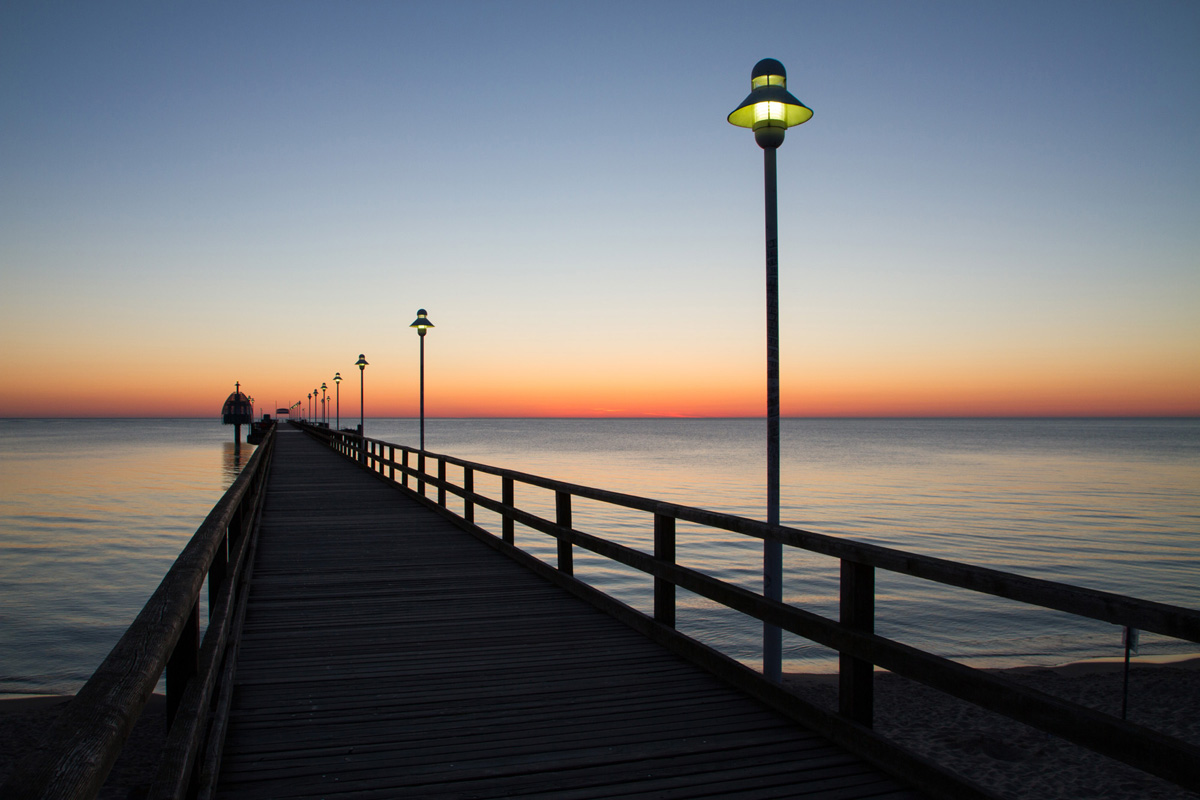My father had a big birthday coming up and wanted to spend it with family. After a lot of discussion, we finally settled on a week in Brittany and were excited to see what the week would bring. The eight of us met up in Pléneuf-Val-André, where we had rented a house for a week. Pléneuf-Val-André is a bustling seaside town during the high season, but quiets down afterwards. The quiet beach in the morning and evenings was perfect for a walk and for enjoying the magnificent sunsets we had while staying there.
On our first day, we didn’t venture too far and decided on visiting Fort La Latte, which was built in the 13th century, and Cap Fréhel, a peninsula with two lighthouses.
The next morning we got up early as we planned to take the ferry to Ile de Bréhat, an island off the northern coast of Brittany near Paimpol. The warm gulf stream comes in off the Atlantic, giving it a very mild climate, perfect for the many flowers which grow there. We rented bikes for the day and rode around exploring. My husband and I both said we’d like to return and stay for longer on the island. We arrived at low tide and left at high tide which made arriving and leaving the island a fun experience.
We rode our bikes to the northern tip of the island and then worked our way back. The island is situated right at the beginning of the Côte Granite Rose (Pink Granite Coast) and looking at the rocks, you can see why.
As we rode our way back to the south, I couldn’t get over how beautiful the island was. It was sunny and warm, almost hot, the hydrangeas were blooming, the houses were very cute and once off the main road, there were almost no tourists.
The Abbaye de Beauport is near the island and we decided to visit on our way back. The abbey was founded in 1202 and is now a beautiful ruin with many hidden corners.
The following day was humid and hot, although it did cool down a bit after a short downpour at lunch time. We made our way to the walled city of St. Malo. The city was first founded in 1 BC, become known for its pirates and privateers and finally 86% of the city was bombed by the Americans and British in August 1944. During a 12 year period the city was rebuilt. Today it is filled with tourists, although there are a few quiet spots which can be found. For me, the most interesting part was seeing the city from outside of the walls as that is what made is so special all those years ago. We ventured out to the small tidal island of Grand Bé as the tide was coming in. Not only was the tide coming in, a storm was coming in as well and we quickly made our way back to the city and stood in a large doorway in the wall while it rained.
After the somewhat disappointing visit to St. Malo, we were very happy with our visit to the medieval walled town of Dinan. We arrived early in the day and spent time exploring, walking past the cute half-timbered houses and enjoying the view from the city wall.
Following our brief visit to Dinan, we made our way towards the east to to Mont Saint Michel, one of France’s most visited places. With around 3 million visitors per year, I’m glad we were there in the off-season and in the late afternoon.There is a shuttle from the parking area to the abbey and we got off at the second to last stop and walked across the bridge. It was amazing watching the island come closer with each step. I could easily imagine staying nearby and being there to see the sun rise and set. The most memorable moment by far was while standing towards the alter and taking photographs, a group of young men walked in and started singing a hymn. That was what churches are made for. Not talking, but singing! Unfortunately, they were asked to stop right in the middle of it, and I think I was not the only disappointed person in that church.
I love cloisters and the one at Mont Saint Michel didn’t disappoint. In fact, I was intrigued by the fact that the columns in the middle were built in a double row and then off-set to eachother.
Did you know you can hear the tide come in? While in the cloister, I overheard a tour guide say you can hear the water rushing in. It’s very dangerous to be out on the sand when the tide comes in as it happens very quickly. On our way back we stood on the bridge and watched the water churning, gurgling and rushing in.
The grand finale of the day was the most spectacular sunset I have ever seen. This is the place to go for amazing sunsets!
The next day a storm rolled in and it was the only day where it was chilly and rainy. So we stayed in the area, visiting Château de Bienassis and walking around Pléneuf-Val-André.
Our second to last day was the longest by far as we decided to drive down to Concarneau and then to Pont Aven for the day. Concarneau’s old town is walled and filled with touristy shops and Pont Aven is known for Paul Gaugin working there and all the small galleries which line the streets.
Our last day was also spent in the area, first visiting Cidrerie de la Baie, tasting our way through their cider, apple juice and calvados, and then walking along the coast near Erquy.
The clouds were out on that last afternoon and the wind was up and there were many people out kite surfing and playing in the waves although the water was chilly. Check out how high the guy in the last photo is jumping! I couldn’t resist going out and taking some photos. I think what I miss most about our trip was being able to walk down to the beach in 2 minutes.
****** Where to eat:
As we were renting a house, we did a fair amount of cooking ourselves. But there were two especially memorable meals, one in St. Malo and one one Concarneau.
Trying to find something in St. Malo while it was raining wasn’t easy and I wasn’t even too sure if I wanted to eat a crèpe. But somehow I walked past Breizh Café, a crêperie that looked promising and we were given a spot at the bar. Turns out, this was the best place ever. Not only did I have a savory buckwheat galette as my main, I followed up with a sweet crêpe for dessert! My husband went for the signature rolled up galette (sushi-style). The chef spent time in Tokyo and uses some of the things he learned there. The service was delightful and we were given wonderful advice on which cider to drink with our meal.
The other extremely delicious meal we had was at L’Amiral in Concarneau. My husband had picked it, saying the main character in his favorite crime series, Commissaire Georges Dupin, always eats there and says it’s the best place. I was sceptical to say the least, but it turned out to be perfect. I skipped the appetizers and went right for “La grande cocotte de l’Amrial”, which was half a lobster, two langoustines, a scallop, mussels, clams and shrimp cooked in a tomato broth with cream and a bit of white wine. Knowing I was eating locally sourced fish had me in seafood heaven and it all tasted very fresh and of the sea. My husband’s dish was equally delicious.

